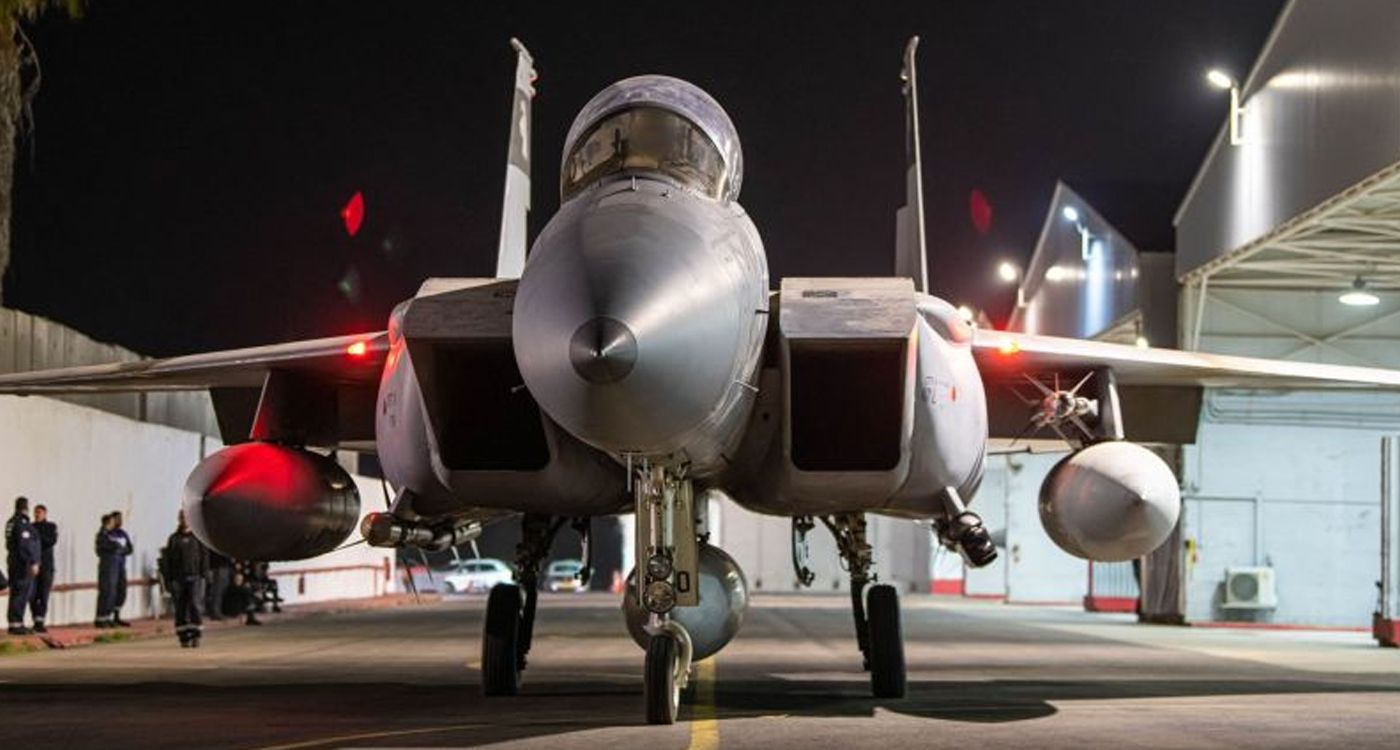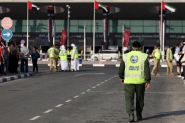- Home
- Middle East
- Operation Days of Repentance: Israel's Strike on Iran

Cette photo diffusée par l'armée israélienne le 26 octobre 2024 montre un avion de chasse israélien quittant un hangar dans un lieu non divulgué en Israël. ©AFP
The serenity of Tehran's skies was shattered from Friday night to Saturday by a series of explosions, tracer bullets and missiles as Israel executed its highly anticipated response to Iran's October 1 attack. Dubbed "Days of Repentance," the operation saw Tel Aviv targeting approximately twenty sites within the Islamic Republic's territory.
According to the Israeli army, this attack involved no less than a hundred aircraft, including F-15s, F-16s and stealth F-35s. Drones were also employed in the offensive.
Jordanian Reservations
The scale of the resources deployed highlights the complexity of the operation, which was made even more challenging by the distance between Israel and its target. Israeli bases are located approximately 1,600 kilometers from the Iranian capital. This journey is all the more arduous as it requires violating airspace closed to Israel or outright hostile to Tel Aviv. To carry out their mission, the Israeli planes likely flew over southern and eastern Syria and parts of northern Jordan before entering Iraqi skies. Finally, some Israeli warplanes even penetrated Iranian airspace, according to CNN.
While Amman has participated in the defense of Israel by intercepting Iranian missiles over its territory during the attacks in April and October, it prohibited Israeli overflights from attacking Tehran. Following the raid, a Jordanian military official emphasized to The New Arab that, during the night, "no combat aircraft were authorized to cross the airspace" of the Hashemite kingdom. However, this position seems contradicted by videos posted at the same time by Jordanian citizens, showing what appears to be Israeli jets flying at low altitude over the Hashemite territory en route to Iraq.
Outwitting Syrian Radars
This type of maneuver aims to evade radar surveillance. In Jordan’s case, it is to avoid worsening already tense diplomatic relations with another Washington ally in the region. However, the IAF’s (Israeli Air Force) main concerns lie in Syria and Iraq. Iran’s influence is particularly strong in these two countries, which are hostile to the Jewish state. Therefore, their anti-aircraft defense systems represent a tangible threat to Israeli aircraft, while their radars allow for collecting valuable information on the aircraft's trajectory.
Transmitted to Tehran, this information would have been essential for Iran’s defense system to prepare. Flying at low altitude allows the IAF to better evade radar coverage of the Iranian axis, while nighttime cover makes visual identification harder. Better safe than sorry, however. This is why these radars were among the first targets of the Israeli attack. At around two in the morning, explosions rang out in central and southern Iran. With local surveillance systems paralyzed, Israeli planes flew through the gaps in the defense.
The Fuel Question
The IAF’s goal was to allow its aircraft to reach eastern Syria, controlled by the Syrian Democratic Forces (SDF) and the US-led international coalition. In airspace secured by Washington, they were able to enter northern Iraq, also under American control. This first destination already involves nearly a thousand kilometers traveled, not accounting for the fact that the planes likely did not fly in a straight line.
Flying at low altitude possibly made the Israeli operation even more complicated. The air is denser than at high altitude, forcing the aircraft to consume more fuel, which reduces their range. This range is further restricted by the armaments carried for their mission, not only due to the additional weight, but to aerodynamic impacts too. While Israeli military propaganda videos showcase aircraft carrying fuel tanks under their wings, these likely were not sufficient to cover the required distance.
The IAF probably benefited from refueling support, a hypothesis corroborated by the Times of Israel. Currently, it’s impossible to determine whether Israel provided this support with its own tankers or if the US military assisted. However, Washington clarified it did not participate in the operation… officially, at least.
The Attack Phase
Upon reaching Iraqi airspace, the Israeli strike force initiated its attack. According to the IAF, this occurred in three phases. The first wave of attacks targeted Iranian air defenses in the Khuzestan and Ilam regions, bordering Iraq. Similar installations linked to the Islamic Revolutionary Guard Corps (IRGC), the regime’s ideological army, were also targeted in western Tehran, according to the Israeli media Yediot Ahronot. By neutralizing these systems, the IAF minimized the risk of losses and missile interception.
After these installations were neutralized, the aircraft in the following two waves attacked several sites related to Iran's missile and drone production. Missile launch sites were also targeted. Tel Aviv aims to partially disable Iran’s capabilities in these strategic areas. In total, Israel claims to have attacked about twenty sites.
Analysts interviewed by Reuters on Monday stated that the Parchin complex, south of Tehran, suffered enough damage to "significantly hinder Iran's ability to mass-produce missiles." While most attacks targeted installations on the outskirts of the capital, other sites were also struck. On Tuesday, the Associated Press released satellite images of the Shahroud base, managed by the IRGC, which produces missiles there.
Strike Far, Strike Hard
While some Israeli aircraft had to enter Iranian airspace to reach their targets, most did not. To carry out their mission, they were equipped with long-range weapons. These are designed to be used from a position distant from the target, allowing strikes with precision while staying out of enemy defenses’ reach.
On this matter, the Israeli army remains particularly silent. Propaganda videos posted on social media show aircraft equipped exclusively for air combat, without revealing any ground-attack munitions. However, another source provides a clearer picture of these munitions.
On October 18, the Telegram channel “Middle East Spectator” published two documents dated October 15 and 16, purportedly from American intelligence. These were quickly deemed authentic by several experts, and the FBI launched an investigation into the source of the leak. These documents allegedly contained a US assessment of Israel’s plans to attack Iran. Among the information were mentions of two types of air-launched ballistic missiles (ALBMs), the ROCKS and Blue Arrow.
Launched from an aircraft, this type of munition combines the range of the plane with that of the missile to reach particularly distant targets. In the case of the Parchin complex, drones were also used, some of which were shot down by remaining Iranian defenses.
Read more




Comments